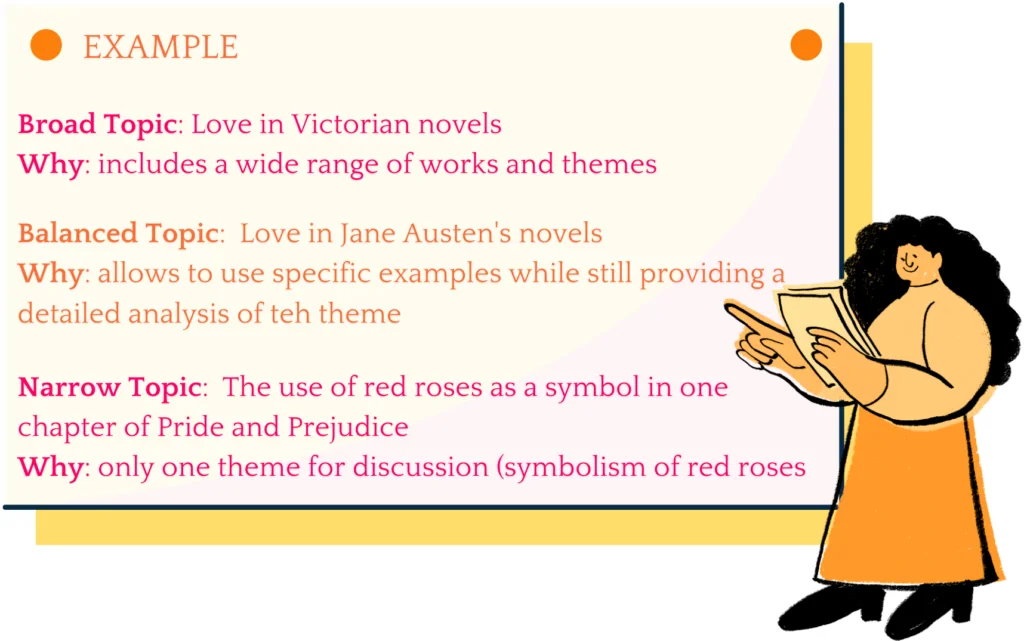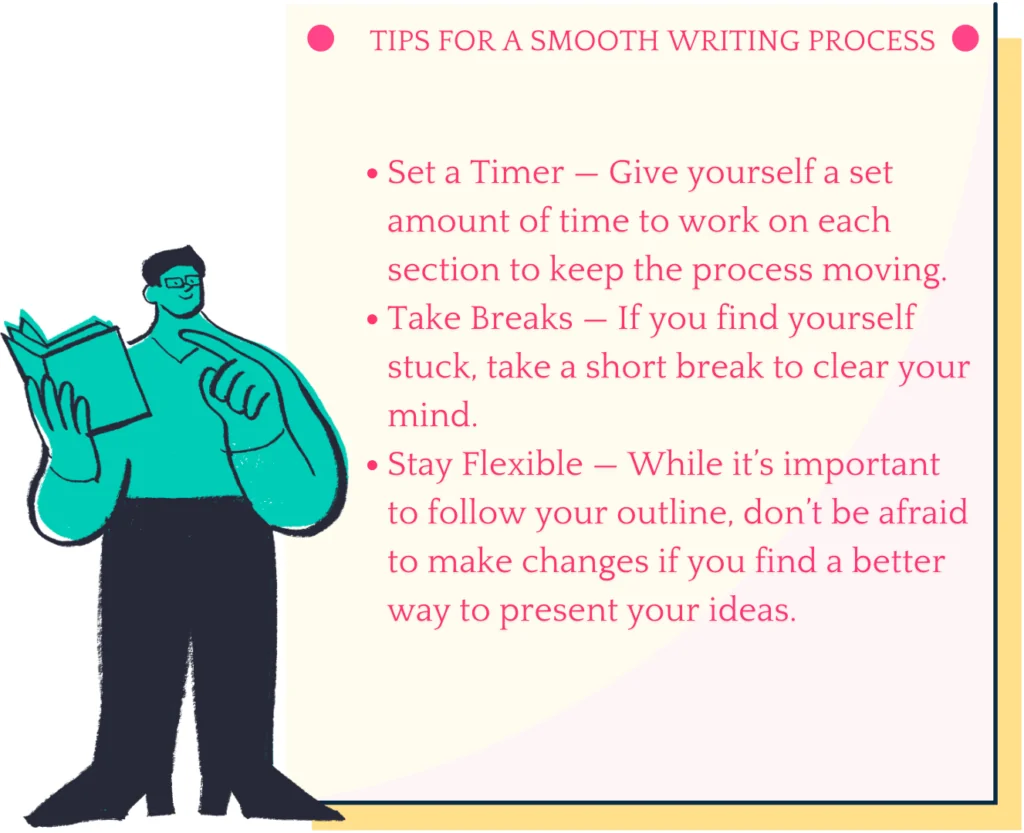Analytical essays are a common type of writing that focuses on examining a single topic to draw conclusions or prove theories. Most students know that this type of writing is widely used to analyze films, books, art pieces, or (more rarely) scientific literature. Since it’s such a common type of essay, learning how to craft it properly is not something to skip on. So, if you want to improve your analytical writing skills, this is your chance. Just go ahead and read the article below.

✅ AI Essay Writer ✅ AI Detector ✅ Plagchecker ✅ Paraphraser
✅ Summarizer ✅ Citation Generator
Analytical Essay: Structure & Characteristics
As you already know (or at least learned now), analytical essays closely look into the arguments or theories trying to explain them. This is exactly the reason why they are so popular for analysis of creative works like art, literature, film, or music as they can help dissect the creator’s themes and reveal hidden meanings. However, analytical essays can also address issues in science, politics, and society. Unlike many other types of writing, what makes analytical essays stand out is that they stick to facts and logic, minimizing personal bias or opinion. After all, it is one of many manifestations of expository writing.
Now, as to the structure, the general rules are simple: your analytical essay should have an introduction posing the topic, a few body paragraphs explaining the arguments, and a conclusion that draws the final line. Even though the overall outline may seem, clear, each of these parts has its own specifics.
Introduction
The introduction of an analytical essay sets the stage for your analysis. It starts with a hook to grab the reader’s attention, followed by some background information to provide context. The introduction concludes with a clear thesis statement that outlines the main argument or focus of the essay. For example, if you’re analyzing a character from a novel, your thesis might focus on the character’s development throughout the story.
Body Paragraphs
The body of an analytical essay is where you can get into the detailed analysis. This section is typically composed of several paragraphs, each focusing on a specific point or piece of evidence that supports the thesis. Each paragraph should start with a topic sentence that introduces the main idea, followed by analysis and evidence. For instance, if you are analyzing a film, one paragraph might focus on the use of lighting to convey mood, while another examines the character’s dialogue. Try to keep every paragraph focused and organized so that all points relate to the thesis.
Conclusion
The conclusion wraps up the essay by summarizing the main points and restating the thesis in light of the evidence presented. This section should not introduce new information but rather reinforce the arguments made in the body paragraphs. The conclusion provides a final perspective on the topic, leaving the reader with a clear understanding of the analysis. For example, after analyzing a piece of literature, you might conclude by discussing how the themes explored in the essay relate to broader societal issues. As an option, you can use a summary tool by A*Help to be certain of your conclusion and how well it reflects the whole text.
How to Start an Analytical Essay: Introduction Tips
Great introduction matters. That’s it, that’s all we are going to say. Gotcha! No, of course, we will explain ourselves. You see, everything’s logical: an introduction i the first thing your readers see and that’s why it’s important to capture their attention right then and there. And one way to do it is to write a good hook.
For analytical essays, choosing a joke as a hook may not be as suitable. Thus, we recommend you choose either rhetorical questions, bold statements, or intriguing facts.
| 👎Bad Hook | 👍Good Hook |
|---|---|
| This essay is about Hamlet. | Have you ever wondered what drives Hamlet’s hesitation in Shakespeare’s famous tragedy? |
| Technology and emotion are interesting topics. | In a world increasingly shaped by technology, what role does human emotion play in artistic expression? |
As you can see, the examples of well-written hook sentences draw in the readers attention by posing intriguing questions. The bad examples are too bland and fail to engage even us in reading further (and we wrote them!).
After a good hook, provide some background information or global context for your topic. This helps the reader understand the broader picture of your analysis and prepares them for the specific points you will discuss. For instance, if you’re analyzing Steinbeck’s ‘The Grapes of Wrath’, you might briefly discuss the historical context of the 1930s and the plight of migrants in that context.
Writing a Strong Thesis Statement
The thesis statement is the basis of your essay. It should tell the readers what you’re going to look at and discuss. Hence, it must be simple and clear. A good thesis is specific, arguable, and can basically navigate the reader through your essay
| 👎Bad Thesis | 👍Good Thesis |
|---|---|
| In this essay, we will analyze The Grapes of Wrath. | In The Grapes of Wrath’s intercalary chapters, John Steinbeck practices a variety of literary devices and stylistic choices to better expose the injustices committed against migrants in the 1930s. |
As you can gather from the examples above, the good thesis statement is specific and indicates exactly what the essay will cover, whereas the bad thesis statement is too vague and doesn’t provide a clear direction for the essay.
Step-by-Step Guide on How to Write an Analytical Essay
Now that you’ve learned the basics, it’s time to move onto the more intricate stage of creating an analytical essay – writing it. We hope that this step-by-step guide will walk you through the entire process, and help you cover all the necessary elements to create an interesting and well-structured essay.
Step 1: Choose Your Topic
Choosing your topic is a vital first step in writing an analytical essay. If your topic hasn’t been assigned, select one that balances between being specific enough to allow for thorough discussion and broad enough to find enough research material.
For example, a topic like “love in Victorian novels” is too broad because it includes a wide range of works and themes. Instead, narrow it down to something more manageable, like “love in Jane Austen’s novels.” This focus allows you to use specific examples and provide a detailed analysis of love as portrayed in this particular novel. However, be cautious about making your topic too specific. A topic like “the use of red roses as a symbol in one chapter of Pride and Prejudice” may be too fixed, leaving you with insufficient material to analyze. Stay at the middle ground that allows for detailed discussion but provides enough scope to find relevant evidence and supporting material.
No matter what topic you choose, your entire analytical essay should revolve around a singular thesis statement. This thesis will guide your analysis and provide a clear point of view for your writing.
Step 2: Research Your Topic
Before finalizing your topic, do some preliminary research to make sure there are enough examples and resources to support your analysis. This step can save you time and effort later on by confirming that your chosen subject is viable and rich with material to analyze.
Once you are sure that you are going on the specific theme, you can dive into the materials you have already found and search for other sources. Gather all the information and evidence to support your analysis. Review the primary work and consider reading critiques or analyses to inspire new ideas. Keep detailed notes on where your information comes from to help with citations and references later.
At this writing stage, it is also a good idea to outline 3 or 4 key arguments you want to highlight in your text. You can even create a table chart to sort out all the evidence you found to each individual point.
Step 3: Create an Outline
By the time you reach this step, you should have completed your research and made notes of everything you want to say in your analytical essay. An outline allows you to arrange these points in the optimal order, ensuring a logical flow of ideas.
An outline is typically broken down by paragraph, with each paragraph exploring a single point. This structure not only helps in organizing your thoughts but also ensures that each point is thoroughly discussed and supported by evidence. For instance, if you are analyzing themes in a novel, one paragraph might focus on symbolism, another on character development, and so on.
Don’t be afraid to move around or rearrange the order of paragraphs. This step is designed to identify and fix structural problems before you start writing. If you find that some points need more elaboration or that some paragraphs are too dense with information, consider breaking them into smaller sections.
Here, you will mostly be focused on structuring the body of your essay. Keep in mind that Each body paragraph should serve the main goal of supporting your thesis statement. Depending on the scope of your essay, the number of body paragraphs will vary. Carefully plan each section so that it either provides background information, highlights the details, or offers contrasting viewpoints, all while supporting your thesis. For example, in an essay analyzing literary devices in a novel, one paragraph could focus on the use of metaphors, while another might examine the symbolism in the text. And don’t forget – each point should be backed by substantial evidence and analysis!
Step 4: Write Your First Draft
With your outline as a guide, start writing your essay. Focus on fleshing out your ideas rather than perfecting grammar or style—there’s time for that later. Include all the evidence and analysis you’ve planned, and make sure each body paragraph is tied back to your thesis. Also, you may provide contrasting points of view to make your arguments look even stronger.
Step 5: Revise Your Draft
Okay, your first draft is ready, yay! Now, you can take a small break and then get back to your paper and read it again. Such revisions are important to refine your essay. Look for ways to improve clarity, coherence, and succinctness. Notice whether all your arguments are well-articulated. Consider removing any unnecessary information or adding explanations where the speculations seem too vague or unclear.
Step 6: Proofread Your Essay
Finally, after you make all the changes you fins necessary, you can proofread your essay to catch any grammar, spelling, or punctuation errors. Don’t skip this step (even though the temptation to do so may be huge) as it helps make your essay polished and professional. If needed, use tools like AHelp Grammar Checker to help identify mistakes and improve your writing quality.
Examples of Analytical Essay Outline
We told you that you need to create an outline to make the writing process a) easier, and b)more organized. But what does an effective outline look like? We prepared an example for you so that you don’t have to go and look elsewhere.
Conclusion
With all those step we outlined in this guide, you’re now equipped with the knowledge needed to tackle analytical essay writing with confidence.Remember, the key to success lies in thorough research, clear organization, and thoughtful analysis. With practice and dedication, you’ll find that writing analytical essays becomes easier and more enjoyable. So go ahead and apply these techniques, and watch your analytical writing skills soar!
FAQ
Follow us on Reddit for more insights and updates.










Comments (0)
Welcome to A*Help comments!
We’re all about debate and discussion at A*Help.
We value the diverse opinions of users, so you may find points of view that you don’t agree with. And that’s cool. However, there are certain things we’re not OK with: attempts to manipulate our data in any way, for example, or the posting of discriminative, offensive, hateful, or disparaging material.